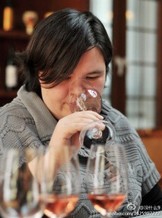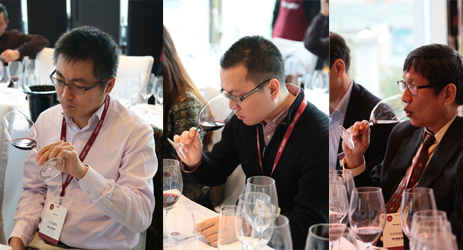Wine study guide
Just like a person, a glass of wine can also tell a story: its background, history, upbringing and so forth. But since wine cannot talk, how does it tell us its story, how does it convey its individual character and personality?
A good glass of wine can tell us a lot through its appearance, aromas and palate. These are the essence of blind tasting. Assessing these elements in the glass is something of great concern to my students.
Appearance story
Plenty of basic information about people and objects can be learnt from their appearance. We all know we can’t judge a book by its cover, but there are some truths. When we see a fashionable woman in very high heels, it can be said that she has a certain fortitude as well as fashion sense. Like people, we can’t totally judge a wine by its appearance, but it can give us clues: for instance, a young wine should look young; white wine should be pale and red wines deeper. If the rim of a young red wine has too bricky a colour or a young dry white appears golden, this hints at a wine prematurely old.

Aroma story
There are three areas of aroma emanating from a wine that tell you about its personality: the primary ones from the grapes themselves, the secondary from the winemaking and the tertiary from ageing in bottle.
If a wine only has fruity aromas, its maturation process wasn’t that complex and its main point is freshness; in this case, buy new vintages. If there are secondary aromas like vanilla, chocolate or smoke, then this wine has been influenced by the hand of the winemaker changing the personality of the wine. These aromas indicate what materials influenced the wine: vanilla and smoke showing new oak, while coffee and nuts show the use of old oak barrels in maturation. So the primary aromas are like the simple innate beauty of an un-made up woman, while the secondary aromas are the nominal ‘improvements’ of mascara, lipstick, etc.
If a wine lacks aromas like leather or mushroom, it is without tertiary aromas, so you can tell immediately it’s a young wine, fairly recently bottled. If it has these tertiary aromas (leather, tobacco, mushroom, wet leaves etc) it not only tells us it was bottled a while ago, but also that it has the structure and concentration to age well, rather like Sean Connery.
Palate Story
There is no easy way to explain how to interpret the story of a wine’s palate. But for me, concentration is the key thing that tells you a lot about a wine. A wine can be fresh and obvious, but if it doesn’t last, then this wine has a short life and, sadly, no future. It’s rather like a One-Hit Wonder; it’s all over quickly and there’s nothing sustainable – do you remember ‘Who Let the Dogs Out?’
But if a wine is concentrated, with lots of flavour concentration on the palate, you should feel its bones. Even if the flavour is delicate rather than obvious, with a great concentration and a long finish, then it has a bright future for people to look forward to: as with maturity can come greatness.
This is just one part of a wine’s overall story, but by listening to the story that it is telling us, we are able to better understand its character and discover its nature.
Click to learn more about available WSET courses in China>>
All rights reserved by Future plc. No part of this publication may be reproduced, distributed or transmitted in any form or by any means without the prior written permission of Decanter.
Only Official Media Partners (see About us) of DecanterChina.com may republish part of the content from the site without prior permission under strict Terms & Conditions. Contact china@decanter.com to learn about how to become an Official Media Partner of DecanterChina.com.







Comments
Submit